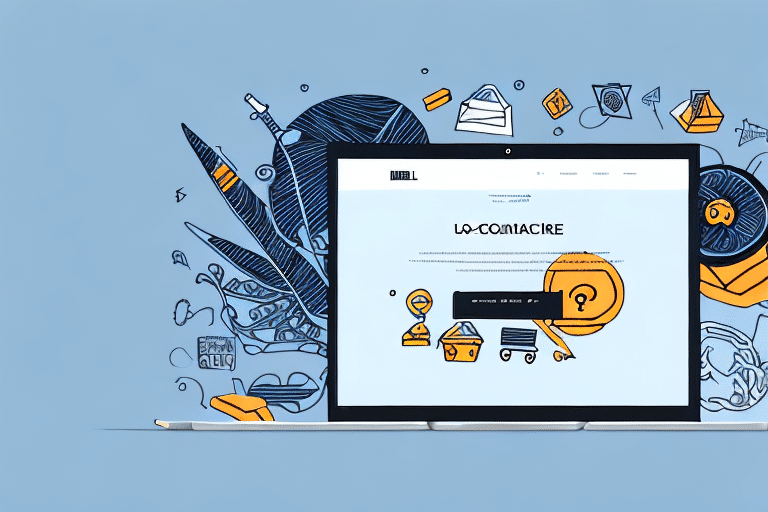Understanding the Costs of Building an E-Commerce Website
Starting an e-commerce business involves several financial considerations, with the cost of building and maintaining a website being a primary concern. The expenses can vary widely based on your business needs, goals, and the complexity of the website. This guide provides an in-depth analysis of the factors that influence e-commerce website costs, different types of platforms, and strategies to optimize your budget.
Key Factors Influencing E-Commerce Website Costs
Several elements contribute to the overall cost of developing and operating an e-commerce website. Understanding these factors can help you make informed decisions and allocate your budget effectively.
1. Website Complexity and Functionality
The complexity of your website directly impacts the cost. Advanced features such as user accounts, wish lists, product filtering, and personalized recommendations require more development time and resources. According to a [2023 eCommerce Trends Report](https://www.shopify.com/blog/ecommerce-trends), websites with enhanced functionalities can see up to a 30% increase in development costs compared to basic setups.
2. Design and User Experience
A visually appealing and user-friendly design is crucial for attracting and retaining customers. Custom designs tailored to your brand can range from $5,000 to $20,000, while using pre-made templates can reduce costs significantly. A well-designed website not only enhances user experience but also improves conversion rates.
3. Hosting and Domain Services
Reliable hosting is essential for ensuring your website is always accessible. Costs can range from $20 to $500 per month depending on the hosting provider and the level of service required. Additionally, domain name registration typically costs between $10 and $50 per year.
4. Payment Gateway Integration
Integrating secure payment gateways is vital for processing transactions. Payment gateways like PayPal, Stripe, and Square charge fees ranging from 2.9% to 3.5% per transaction. Some may also have monthly fees or additional charges for international transactions and chargebacks.
5. Security Measures
Ensuring your website is secure protects both your business and your customers. Costs include SSL certificates (ranging from $10 to $200 annually) and compliance with standards like PCI DSS, which may require additional investments in security infrastructure.
Types of E-Commerce Platforms and Their Costs
Choosing the right platform is crucial for your e-commerce website's success and cost management. Here are the main types of e-commerce platforms:
1. Self-Hosted Platforms
Platforms like WooCommerce and Magento offer extensive customization options. While the software itself may be free or low-cost, you'll need to pay for hosting, SSL certificates, and possibly additional plugins or extensions. Total costs can range from $300 to $5,000 annually.
2. Hosted Platforms
Hosted solutions like Shopify and BigCommerce provide all-in-one packages that include hosting, security, and support. Monthly fees typically range from $29 to $299, making them a convenient option for businesses looking for a turnkey solution.
3. Custom-Built Platforms
For businesses with unique requirements, a custom-built e-commerce website offers maximum flexibility and scalability. Development costs can range from $10,000 to over $100,000, depending on the complexity and specific functionalities needed.
Comprehensive Cost Breakdown of an E-Commerce Website
Building and maintaining an e-commerce website involves various expenses beyond the initial development. Here's a detailed cost breakdown:
1. Development Costs
- Custom Design: $5,000 - $20,000
- Platform Setup: $500 - $5,000
- Feature Integration: $1,000 - $10,000
2. Ongoing Maintenance
- Hosting: $20 - $500/month
- Domain Renewal: $10 - $50/year
- Security Updates: $100 - $1,000/year
3. Marketing and SEO
- SEO Services: $500 - $5,000/month
- PPC Advertising: Variable based on budget
- Content Marketing: $300 - $3,000/month
4. Payment Processing Fees
- Transaction Fees: 2.9% - 3.5% per transaction
- Monthly Fees: $0 - $50/month
Hidden Costs to Anticipate
While planning your budget, be aware of potential hidden costs that can arise during the development and operation of your e-commerce website:
- Website Maintenance and Updates
- Additional Plugins or Extensions
- Content Creation and Management
- Customer Support Tools
- Return and Refund Processing
According to a study by Statista, businesses overlook these costs, leading to budget overruns and financial strain.
Budgeting and Planning for Your E-Commerce Website
Effective budgeting ensures that you allocate sufficient resources to all aspects of your e-commerce website. Here's how to plan your budget:
1. Assess Your Business Needs
Identify the essential features your website requires to operate efficiently. Prioritize functionalities that align with your business goals and customer expectations.
2. Allocate Funds for Development and Design
Investing in a professional design can enhance user experience and brand perception. Allocate a significant portion of your budget to design and development to ensure quality and functionality.
3. Plan for Ongoing Costs
Factor in recurring expenses such as hosting, maintenance, marketing, and security. Regularly updating your website and marketing strategies is crucial for sustained growth.
4. Set Aside a Contingency Fund
Unexpected expenses can arise during the development process. Having a contingency fund helps manage unforeseen costs without disrupting your budget.
Strategies to Reduce E-Commerce Website Costs
Managing your budget effectively involves implementing strategies to minimize expenses without compromising quality:
1. Utilize Open-Source Platforms
Platforms like Magento and OpenCart eliminate licensing fees, reducing initial costs. However, ensure you have the technical expertise to manage these platforms or consider hiring professionals.
2. Use Pre-Made Templates
Choosing pre-designed templates can significantly cut design costs. Customizing these templates to fit your brand can be more affordable than building a website from scratch.
3. Optimize Hosting Plans
Select a hosting provider that offers scalable plans, allowing you to upgrade as your business grows. This approach prevents overpaying for unused resources in the initial stages.
4. Implement DIY Marketing
Leverage free or low-cost marketing channels such as social media and content marketing. Investing time in learning SEO can also enhance your website's visibility without additional costs.
5. Regular Maintenance
Proactively maintaining your website can prevent major issues that require costly fixes. Regular updates and security checks ensure your site runs smoothly and securely.
Choosing the Right E-Commerce Platform for Your Budget
Selecting the appropriate platform is critical for balancing functionality and cost. Consider the following when making your choice:
1. Evaluate Platform Features
Ensure the platform offers all the necessary features for your business operations. This includes inventory management, payment processing, and customer relationship management.
2. Consider Scalability
Choose a platform that can grow with your business. Scalability ensures that as your customer base expands, your website can handle increased traffic and transactions without significant additional costs.
3. Assess Technical Requirements
Determine whether you have the technical skills to manage a self-hosted platform or if you need the support provided by a hosted solution. This assessment can influence both your choice of platform and associated costs.
4. Compare Total Cost of Ownership
Look beyond the initial setup costs and consider ongoing expenses such as hosting, maintenance, and transaction fees. This comprehensive view helps in selecting a platform that fits within your long-term budget.
Conclusion: Balancing Quality and Affordability in E-Commerce Website Development
Building a successful e-commerce website requires a strategic approach to budgeting and cost management. By understanding the key factors that influence costs, selecting the right platform, and implementing cost-saving strategies, you can create a robust online presence without breaking the bank. Investing in quality design and functionality not only enhances user experience but also drives sales and fosters customer loyalty, ensuring long-term success for your e-commerce business.




















